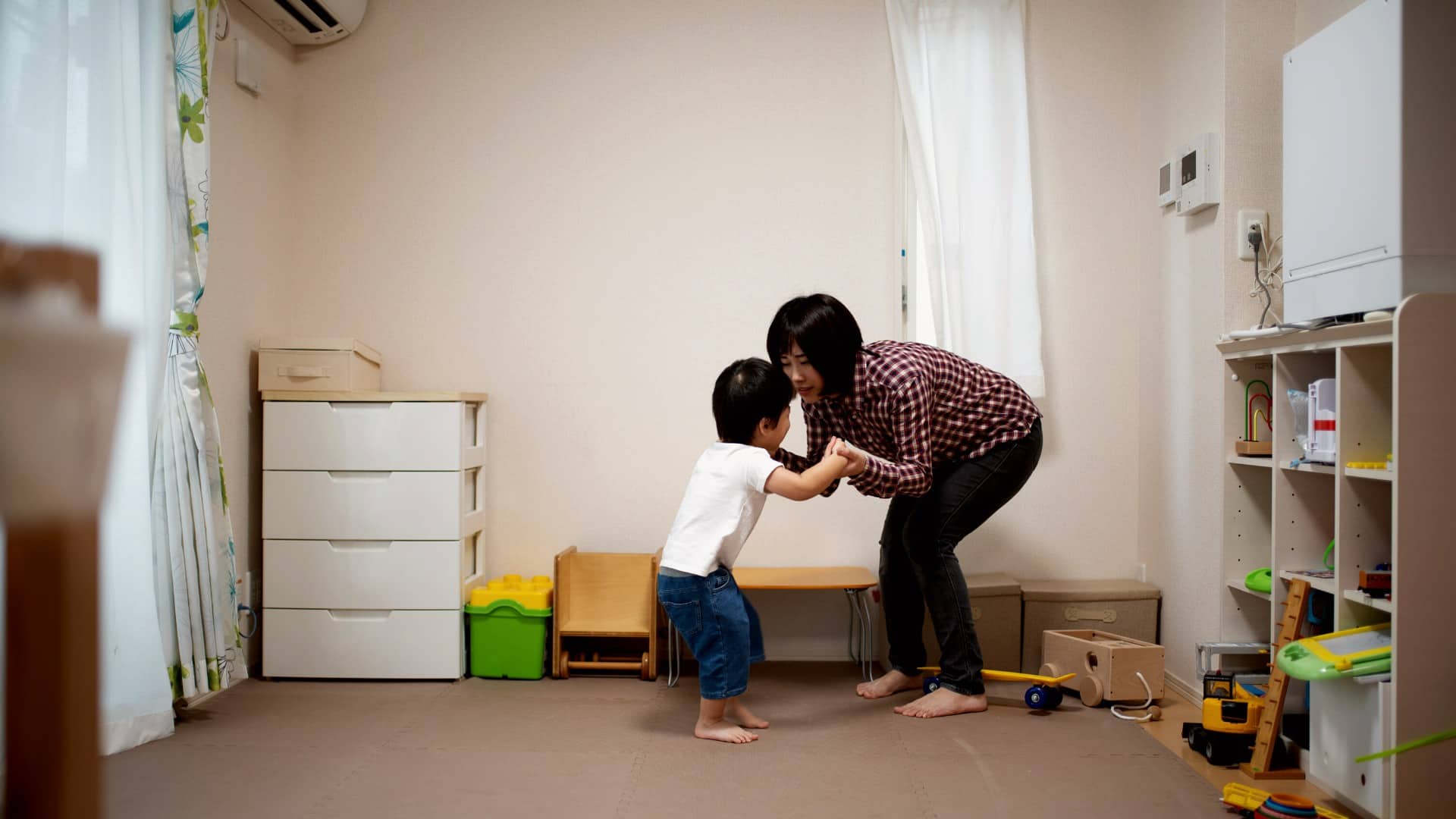When it comes to managing your child’s behavior, the concept of time out corners often sparks debate and confusion. Are they truly beneficial, or do they risk harming your child’s mental well-being? How can you ensure they are used effectively, and what alternatives exist?
If you’re grappling with these questions, you’re not alone. This post aims to demystify the concept of time out corners, offering insights into their proper use, potential benefits, and viable alternatives. By the end, you’ll have a clearer understanding of how to incorporate time-outs into your parenting toolkit responsibly and effectively.
Read on to discover how to transform time-out corners from a source of frustration into a constructive discipline strategy that fosters growth and self-regulation in your child.

Table of Contents
What Is A Time-Out Corner?
A time-out corner refers to a quiet and distraction-free area used in behavioral management. Here, children are able to pause from activities to think about their actions. Time out corners are a discipline technique that emphasizes a break from stimulating environments to deter unwanted behavior.
Are Time Out Corners An Effective Discipline Technique?
The use of time-out corners has recently come under the spotlight with certain psychologists maintaining that they are detrimental to a child’s mental health and well-being.
However, it is important to note that there is no scientific research to back up this assumption and that, research has shown when you use time-outs effectively, they can help teach children self-regulation and responsibility.
When used as an opportunity for emotional regulation instead of a punishment, a timeout corner can be highly beneficial to young children.
Is A Timeout Corner Effective For A 2-Year-Old’s Bad Behavior?
At age two, children are still learning to understand their environment, process their emotions, and understand consequences. Their behavior is not intended to be malicious as a result, I would use timeout corners sparingly.
If you do decide to use a time out corner, bear in mind that at 2 years old, simplicity is key.
A time-out should be brief, no more than 2 minutes long and your calm explanation afterward will help them associate the time-out with the specific behavior.
Is A Timeout Corner Effective For A 3-Year-Old’s Bad Behavior?
For three-year-olds, a timeout can teach self-regulation however it is important it’s not overused or it will lose its effectiveness. A 3-year-old will start to understand if you say a time-out is imminent.
A successful time-out for this age group requires consistency. Use the technique sparingly, ensuring that your little one understands why the time-out was given. Always reintegrate them with a positive interaction after and a quick chat as to why the time out happened.
Is A Timeout Corner Effective For A 4-Year-Old’s Bad Behavior?
At four, children may respond well to timeouts as a discipline technique as they have a greater capacity for understanding consequences.
Keep the time out corner free of distractions and do not leave your child in the timeout space for longer than 5 minutes. You must ensure that the time out is used as a parenting technique to guide toward positive behavior rather than as a harsh punishment.
Is A Timeout Corner Effective For A 5-Year-Old’s Bad Behavior?
In my opinion time outs, become more effective as children grow. Five-year-olds are more socially aware, and timeouts can be effective when used as part of behavior therapy.
It’s crucial to follow through with the process each time and to remain calm. Discuss the behavior with your child post-time-out to solidify their understanding of WHY they ended up in a timeout.
NOTE: Despite the current criticism of timeouts it is important to note that the American Academy of Pediatrics supports time-outs when used correctly.
How To Make A Time-Out Corner
Setting up a time-out corner can be a game-changer in managing your child’s behavior, but it requires thoughtful preparation.
The key is to create a space that encourages reflection and calmness, rather than feeling like a punishment. In this section, you’ll discover step-by-step guidelines for designing a time out corner that is both effective and nurturing:

- Choose a quiet place. When creating a time-out corner, it’s essential to choose a quiet place. This helps minimize distractions and ensures that the focus remains on reflection. A quiet environment helps the child calm down and think about their behavior.
- Ensure it is away from distractions. The chosen area should be away from distractions like toys, electronics, or busy household areas. This ensures that your little one can concentrate on understanding their actions without external stimuli. A distraction-free zone helps reinforce the seriousness of the time-out. It also aids in quicker, more effective reflection.
- Select an area with a blank wall. An area with a blank wall provides a non-stimulating environment for your child. This lack of visual stimuli helps the child focus inward rather than getting distracted by surroundings. A blank wall can make the time out corner feel more neutral and less like a punishment. It emphasizes the reflective nature of the time-out.
- Place a time-out chair, sometimes referred to as the ‘naughty chair’. In this space, place a time-out chair, sometimes referred to as the ‘naughty chair’. However, I am not in favor of calling it this as we are aiming to emphasize calming down and reflection, not punishment. The chair helps to reinforce the purpose of the area, signaling that it’s time to calm down and think about behavior. The chair should be stable and size-appropriate, but not too comfortable, as it’s not meant for lounging. This clear signal aids in behavior modification.
- Accompany the time-out chair with positive reinforcement techniques. After the time-out, discuss with your child what happened and how to improve. This discussion is crucial for helping your little one understand the consequences of their actions and how to make better choices in the future. Positive reinforcement can include praise for good behavior and encouragement to keep improving. This approach turns the time-out into a learning experience rather than a punishment.
- Ensure the space is safe and free from any items that your child could throw or break. Safety is paramount to prevent any accidents or injuries during the time-out. A safe environment also ensures that the focus remains on behavior reflection rather than dealing with mishaps.
- Ensure your child understands this is a safe place. Lastly, ensure your child understands that the time out corner is a safe place. It should be used for calming down and not be associated with fear or excessive isolation. This understanding will help your little one feel secure and more receptive to the reflective process. It’s important for your child to know that the time-out is designed to be a supportive measure aimed at helping them manage their behavior more appropriately.
TIP: Timeout corners should not be in your child’s bedroom as this needs to remain a safe haven for them where they are happy to nap, sleep, and play.
My Time Out Corner Rules
Establishing clear rules for using a time out corner is crucial for its success as a discipline tool. When done right, time-outs can help your child learn self-regulation and understand the consequences of their actions.
From giving a clear warning to reconnecting with your child afterward, these rules will help you maintain a positive and nurturing approach to discipline with a time out corner.

1. Give A Clear Warning First.
When implementing a time-out, it’s important to give clear warnings beforehand. I like to use the 3 strike rule.
- Strike 1 = A clear “No” with an explanation of why this behavior is not acceptable.
- Strike 2 = A stern “No” with a short reiteration of why the behavior is not allowed and what will happen if they continue to misbehave.
- Strike 3 = Final warning. Explain to your child that if they repeat the unwanted behavior, they will be having a time out to recompose themselves.
2. Calmly Guide Your Child To The Time-Out Corner If The Behavior Continues
If the undesired behavior continues, no matter how much your child protests, calmly guide them to the time out corner.
This will ensure the process remains peaceful and controlled and will model appropriate behavior to your little one.
If you start to get angry and defensive, your child will think this behavior is acceptable and start to escalate the situation.
3. Ensure The Time-Out Area Is A Place Of Minimal Stimulation And Isolation.
Remember, the time-out area should be a place of minimal stimulation and isolation. It’s not a punishment, but a chance for your child to regain emotional control.
Include comfy cushions and a timer to make the space feel comfortable and to help your child feel secure within the space.
4. Do Not Have Long Time Outs.
Duration is key with time out corners: a good rule is one minute per year of age. For example, a 2-year-old would sit for 2 minutes.
Always use a clear, visible timer, so your child can see an end to the time out.
5. Reconnect With Your Child After The Time-Out.
Positive parenting involves empathy and attachment; after the time out, reconnect with your child. Discuss the behavior that led to the time out and reinforce your love for them. This can help them learn from the experience and maintain a strong bond with you.
Remember, the goal of time outs is for children to learn and improve their behavior, not to make them feel excessively punished. This perspective helps maintain a positive and constructive approach to discipline.
- Understand the best way to communicate with your child in different situations, so you feel more confident, relaxed, and in control... even during the most challenging moments. 💖
- Learn how to set clear boundaries and engage your child's cooperation 🌟
- Break free from tantrum cycles and promote healthy alternatives (without using punishment) 🎉
- Learn my trade secrets (collected over 40+ years in the childcare industry) to get your child to listen to you without shouting 🙌
- Promote kindness and honesty to prioritize a respectful relationship with your child ❤️
REMEMBER: Never shout or be physically rough with your child when taking them to the timeout corner. You must remain calm and keep words to a minimum until the time-out is over. Then keep your explanation as to why the time out was used in the first place clear and concise.
Time Out Corner Alternatives
When it comes to discipline, time-outs are not your only option.
A method that has gained popularity recently is the “Time-in” approach, where instead of isolating your child, you bring them close to you to promote a supportive relationship.
You can then discuss their feelings, assess why they are behaving a certain way, and offer love to help your child navigate through a tricky time.
Watch this video to learn more about time-out alternatives:
Another method is “Positive Reinforcement”. Positive reinforcement works by acknowledging good behavior instead of punishing the bad. You might reward your child with extra playtime if they share their favorite toy or help their younger sibling learn how to play a new game.
I am a great supporter of Quiet Time as a means of helping your young child manage their emotions and it is a less severe form of timeout. It is especially effective for 2 to 3-year-olds and younger and provides a space where children take a break to calm down in a designated space.
It’s not a punishment, but a chance for reflection and calming down without feelings of isolation. A quiet corner encourages quiet activities such as reading books and doing jigsaws and unlike a time out corner, it can have soft furnishings and is a comfortable space. It can also be shared and the idea is that it becomes a default space to retreat to when things become overwhelming.
Always ensure that the discipline tool of choice matches the severity of the behavior. For me, timeouts should be reserved for more serious offenses and not used too often.
As always when dealing with young children’s behavior, picking your fights is key, and finding alternative ways to avoid too many confrontations is best.
Using appropriate actions will help your little ones understand the consequences of their actions and always remember, your goal is to teach, not just to punish.
By using these alternatives to timeout when appropriate you can will be able to encourage better behavior without negative impacts.
This way, you foster an environment of mutual respect, and understanding while lovingly supporting your little one as they learn the complex task of managing their very human emotions.
How Long Should Time Out Last?
I have always maintained that one minute of time-out for each year of the child’s age is a suitable time-out time limit. This rule of thumb is also what the American Academy of Pediatrics and the Centers for Disease Control recommend.
For example, a 3-year-old would have a 3-minute time-out. As they grow older, you can extend this time slightly but it’s important not to exceed the recommended duration.
Overly long time-outs can lead to emotional dysregulation and reduce the positive impact of the disciplinary action.
As already mentioned using a timer can help both you and your child recognize when the time-out period begins and ends.
It’s essential to explain the reason for the time-out in clear, calm words before it starts. This will help your child understand why their behavior is inappropriate and learn the desired behavior.
Remember, the goal of a time-out is to remove your child from a negative situation and allow them to regain self-control. It’s a teaching tool, not a punishment, so keeping the time-out period appropriate for the child’s age ensures the method remains both fair and effective
Looking to get your little one to sleep quickly and effortlessly to prevent overtiredness? Check out my Bedtime and Nap Cheat Sheet and master the art of making daytime naps and bedtimes as seamless as possible.
A bedtime & nap cheat sheet so good your little one will ask you to put them to bed...
Laura Williams "This is a life saver! I'm so glad I downloaded your bedtime & nap cheat sheet. My little one actually asked me to put him to bed last night! Unbelievable! Thank you so much!"
Click Here For The FREE Cheat Sheet
Frequently Asked Questions About Time Out Corners
This section covers common inquiries about the practice and implementation of time-out as a disciplinary method for children.
Q: What is an example of time-out punishment?
A: Time-out punishment typically involves having your child sit quietly in a designated spot. The key is for the time out to be held in a boring place where your child can reflect on their behavior without distractions.
Q: Is time-out gentle parenting?
A: Time out can be part of a gentle parenting approach when used correctly. It is meant to give your child a break to calm down rather than to isolate or shame them. How you implement the time-out, including your tone and explanations, can make it a gentle discipline strategy.
Q: What are some creative ideas for setting up a time-out space?
A: A time-out space should be simple and free of stimuli. You could consider a cozy corner with a soft mat or a beanbag in a quiet room. Remember the difference between a time out corner and a quiet corner is that in a time out corner, there are no toys or books present.
Q: Are there any negatives of using time out as a discipline technique?
A: If overused or too long, time outs can lead to feelings of isolation or anxiety. It’s vital to ensure time-out isn’t used as a threat but as a constructive step towards better behavior.
NOTE: If you are still undecided as to whether time outs are something that you wish to use read this research-based article that explains the impact time outs have on our children’s development and well-being.
Need More Parenting Help?
- Download our FREE Bedtime & Nap Sleep Cheat Sheet. It’s a free, easy-to-use and proven formula designed for parents of 0-5 year olds to master the art of consistently undisturbed and restful sleep without the yelling, nagging or exhausting long-winded evenings.
- Check out our Parenting Toolbox. You’ll get access to expertly-chosen products that you can guarantee are the best for your little one and your wallet.
- Are you looking for personalized guidance to navigate the challenges of parenting? I offer 1-on-1 consultations to bring you tailored strategies and actionable advice to help support your child's growth and well-being with confidence.

A bedtime & nap cheat sheet so good your little one will ask you to put them to bed...
Laura Williams "This is a life saver! I'm so glad I downloaded your bedtime & nap cheat sheet. My little one actually asked me to put him to bed last night! Unbelievable! Thank you so much!"
Click Here For The FREE Cheat Sheet



